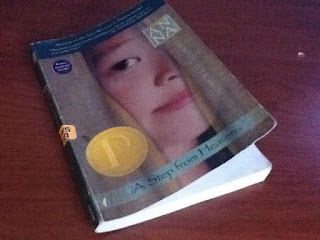by An Na (2001)
Winner of the Michael L. Printz Award
A 2001 National Book Award Finalist
An ALA Notable Book
An ALA Best Book for Young Adults
An IRA Young Adult Choice Book
A Horn Book Fanfare Book
A New York Times Best Book of the Year
A Publishers Weekly Best Book of the Year
2001 Kiriyama Prize Notable Book Shortlist
A Publishers Weekly Best Seller
The author's style of writing in this book offers a unique perspective that evolves with the age and knowledge of the narrator. The sentences begin simple and fragmented the way a very young child would talk and describe the world. As the narrator ages, her language develops and she begins to be able to explain her thoughts much more clearly and coherently. You spend the entirety of the book in the mind of a Korean girl who immigrates to America at a very young age. You experience her life up until she is about to leave for college. It is a story of trials and tribulations, and eventually realized dreams.
I believe older elementary students would really enjoy this book. The unique perspective presented by the author is one that I think children could relate to easily. I specifically enjoyed the parts of the book when the young girl could not speak English yet, and would describe things as she witnessed them; such as Coca-Cola as dirty sea water and crayons as color sticks. Students would pick up on these observations and instantly realize what the author was speaking of.
I would be a little leery of using this book in my classroom without having a discussion about religion first. Much of the beginning of the book revolves around ideas rooted in Christianity. Seeing how the story is of a girl from Korea, I would not want students to gain the misconception that everyone around the world is Christian. That being said, religion is a large part of culture and of peoples lives. So long as the students understood that there are many religions that people believe in, and that some people do not believe in any religion and that they must accepet and appreciate all of these viewpoints, I would have no problem using the story in my classroom.
A Step From Heaven offers terrific insight into the mind of a young person immigrating to America and integrating into our culture; a valuable resource that time would not be wasted on in the classroom.



























